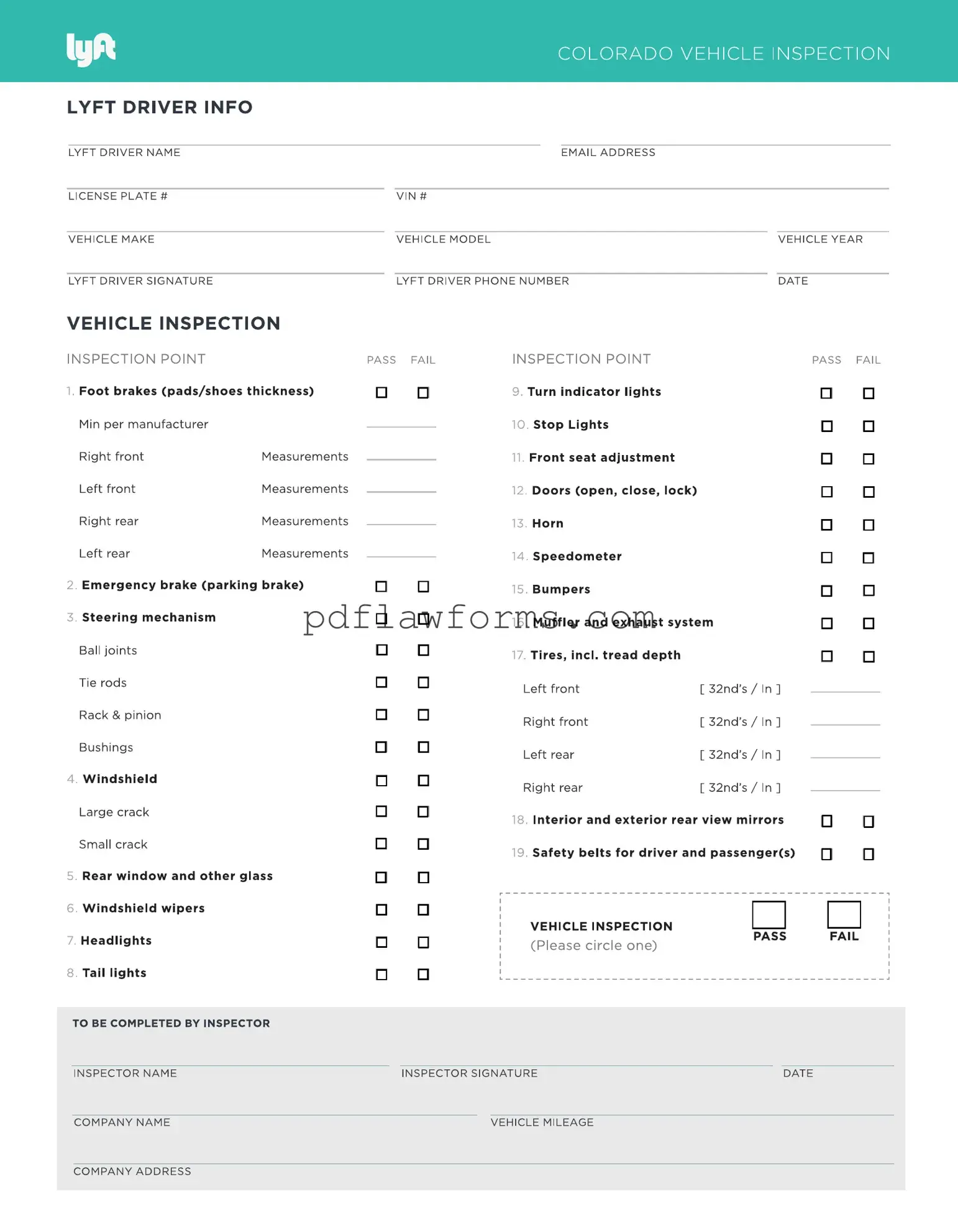Completing the Lyft Inspection form accurately is crucial for ensuring a smooth ride-sharing experience. However, many individuals make common mistakes that can lead to delays or complications. One frequent error is failing to provide complete vehicle information. Each section of the form must be filled out thoroughly, including the make, model, and year of the vehicle. Incomplete details can result in the form being rejected.
Another common mistake is neglecting to check the vehicle's condition before the inspection. Riders should ensure their vehicle meets Lyft's safety standards, including functional brakes, lights, and tires. If any issues are present, they should be addressed prior to submitting the form. Ignoring this step can lead to failed inspections.
Many people also overlook the importance of clear and legible handwriting. When filling out the form, it is essential to write clearly so that all information is easily readable. Illegible writing can cause confusion and may require resubmission of the form.
Additionally, some users forget to sign and date the form. A signature is often required to validate the inspection. Without it, the form may be considered incomplete. It's a simple step that can easily be overlooked in the rush to submit.
Another mistake involves not using the correct inspection checklist. Lyft may have specific requirements that differ from other ride-sharing companies. Failing to adhere to these guidelines can lead to complications during the inspection process.
Moreover, individuals sometimes submit the form without ensuring all required documents are attached. This includes proof of insurance and registration. Missing documents can delay the approval process and prevent drivers from operating their vehicles.
Some users may also misinterpret the instructions provided on the form. Carefully reading and understanding each section is vital. Misunderstandings can lead to incorrect information being submitted, which can complicate the approval process.
Another mistake is not keeping a copy of the completed form for personal records. Having a copy can be helpful for reference in case any issues arise later. Without it, individuals may find themselves scrambling for information.
Additionally, individuals sometimes rush through the form, leading to careless mistakes. Taking time to review each section before submission can prevent errors that might otherwise cause delays.
Finally, some users fail to follow up after submission. It's important to check the status of the inspection to ensure everything is in order. Lack of follow-up can result in missed notifications or additional requirements that need to be addressed.
